Saturday, March 16 we left, Kimsi and I for the West of the country, in Uyole, to visit Tanzanian Agriculture Research Institute i.e. TARI.
We left early in the morning to arrive the earliest possible in Mikumi, where we could take a bus to Mbeya, the Capital of the region, six hundred kilometres away. But the fate wanted us to take the bus from Kilosa only at eleven o'clock, to arrive at four o'clock in the afternoon, a journey of 75 kilometres. We found a bus that dropped us off in Mbeya at 2 am.
The next day being a Sunday, we went to see a long-time friend who lives next to the Ndolezi meteorite, one of the world’s largest discoveries to this date.
It is a meteorite discovered by scientists in 1930 but long known by the people of the country who considered it as a sacred place.
It measures 1 m 63 on 1 m 22 on average and its weight is estimated to 16 tonnes.
Originally the one who discovered it, hitting the stone with his hoe used a small section to forge tools in But the Ancients persuaded him to keep it as it is and respect it as a sacred place. Subsequently it was released from its gangue of earth, leaving it on this base that can be seen on the photo. This base has been covered with small tiles to protect it from erosion by rain.
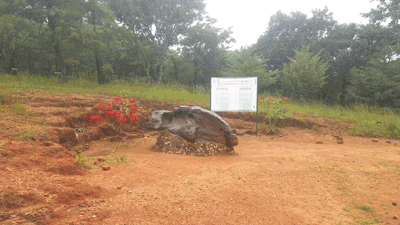
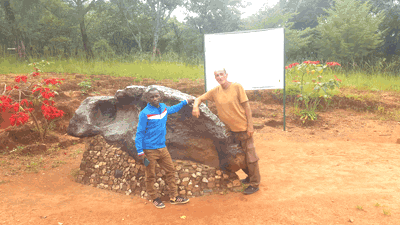
At the "front", on the south side, we can see cuts that are the consequence of taking samples for analysis, and also of clandestine samples for resale. The meteorite has been taken care of by a family living next door. Access was open until 2014 then was built a small gatehouse giving explanations in Swahili and in English, a barrier was erected as well as a small museum where the entrance fee is paid.
The museum is interesting and clearly explained, giving details also on the curiosities of the region such as ornate walls, pottery, traditional metal kilns or ornaments.
In 2022 the government wanted to expand the tourist place by driving out the surrounding inhabitants but he had to give up before the villagers' resistance.
It is therefore with pleasure that I found my friend Musa, his wife, his children and his mother, a calm and gentle woman.
The meteorite is made of 90% of iron, so we have could feel the magnetism that emanated. The other elements are the nickel (8%), with the remainder composed of copper, sulphur and phosphorus.
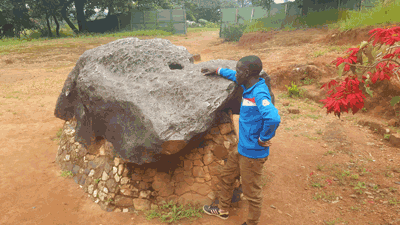
The Mbozi meteorite, of 16 tons, composed mainly of iron
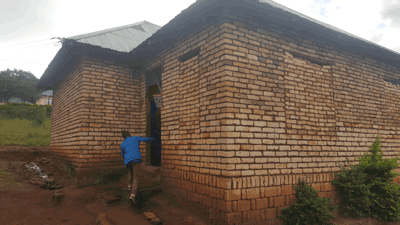
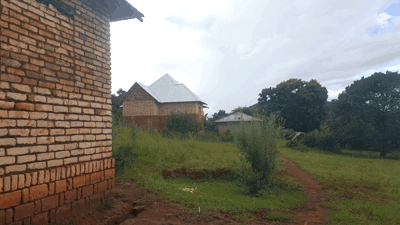
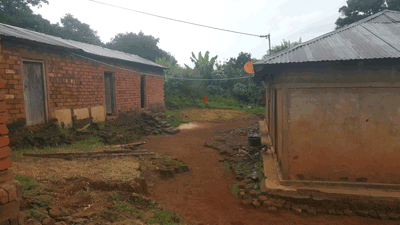
Some views of the houses in Ndolezi. Windows are provided but
clogged with bricks while waiting to have the means to finish the frame.
To the right the old part.
From Mbeya to the Mbozi district we were able to observe fields with trials of different maize varieties. These are planted in line, less than one foot from each other. The tradition is to plant in a pl1ot of two to three plants at a distance two feet, in order to balance the ratio between the effort provided and the soil fertility. One foot is about 30 cm.
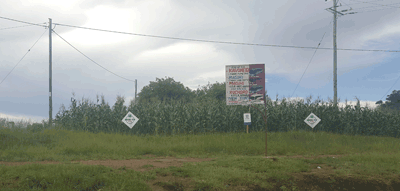
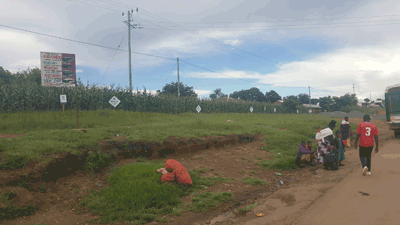
Test plots
Chabima’s soils, however, would allow a reduced spacing being so they are fertile, and the fields are sown in alternating with beans to provide nitrogen. Kimsi therefore resolved to test with one plant per cell per year next.
The Uyole Agricultural Research Institute is located in an impressive area of land where there are also university or technical training centres..
We went there by motorcycle taxi and met the fruit tree project managers. 55On one of the stations oil palm trials, but in fact, despite what I was told on the phone, there were no pear seedlings, nor ready peach or plum trees. One of the staff, named Shekola, however, informed us that she had seedlings at home. So we went there, in a relatively weealthy suburb of Uyole, a large property where she raises pigs.
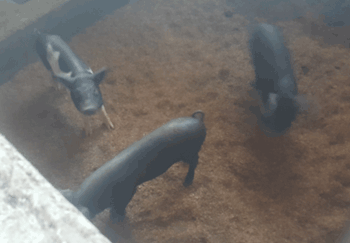
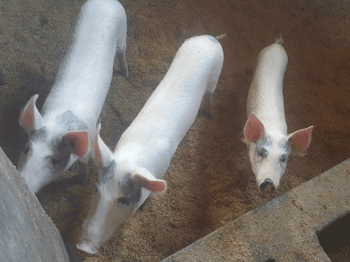
Pig breeding
In the garden she showed us her peach plants, we acquired a dozen. Plum and pear trees were unfortunately completely parched.
So we returned the same day to Iringa, rather happy to make the trip by daytime : the pine forests of Iringa, the gorges of the Ruaha, the descent to these gorges, impressive by its laces.
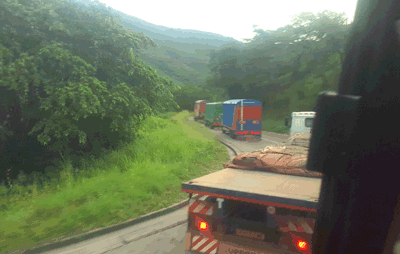

The descent to Ruaha. The forest, very green and dense in this season, is actually deciduous. In the dry season, you only see trees leafless.
We slept in Iringa, a very welcoming city, with friendly locals and willingly giving information with an affable manner.
The next day we took a bus at five in the morning, thinking about being at ten o'clock in Morogoro. But in the gorges we have had the inevitable tire burst, a tire worn to the rope, and not less inevitably the bus had no spare wheel.
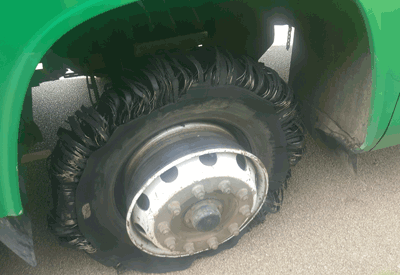
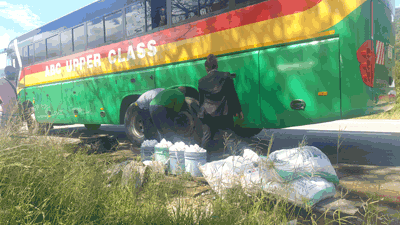
Tyre breakage and reassembly of a tyre brought by a other bus. In the foreground pieces of calcite offered for sale, "for decoration" as I was told
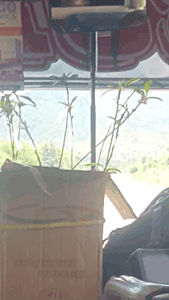 Transport of the cardboard containing our trees to the front of the
coach
Transport of the cardboard containing our trees to the front of the
coach 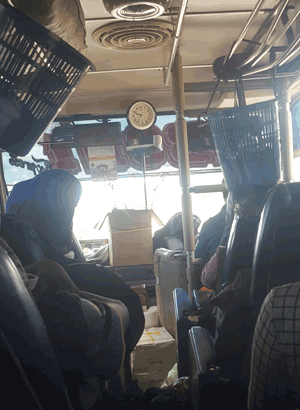 so as not to put it in the
boot
so as not to put it in the
bootSo we arrived at noon in Morogoro, and after seeing Kimsi’s daughter who is learning sewing there then we returned to Kilosa. I dropped Kimsi off at his house at nightfall, and as it had rained the trail to Chole was particularly slippery, I fell six times along the way !
A beautiful journey, rich in lessons.